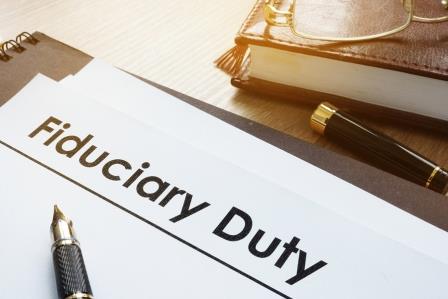The Importance of Loss Assessment Coverage

Insurance in an Association can be confusing. One important distinction in your personal homeowner policy package (commonly called an “HO6” policy) is Loss Assessment Coverage. This coverage is typically different from your “Real Property Coverage.” Real Property Coverage should cover your personal contents, coverage of building construction items like flooring and walls that may NOT be insured by the Association’s Master Policy (which can vary greatly by Association) and, at a bare minimum, coverage of all of those covered components up to the Association’s Master Policy deductible. Loss Assessment Coverage is separate and important to understand. At is core, it is actually quite simple. The Association typically assesses the owner(s) for their share of the Master Policy’s deductible in the event of a loss. The homeowner simply submits that letter, stating they’re being assessed to their HO6 carrier, and their HO6 carrier pays out that deductible assessment. *If the owner doesn’t have this coverage, it is out of their pocket and the Association will move to collect on it just as they would any other regular assessment (“dues”) or special assessment. This is becoming increasingly important because, for the past decade, Association Master Policies have had increasing deductibles – sometimes $25,000 or $50,000 on common losses; and almost all Association policies now have a separate percentage-based deductible for a loss related to wind and/or hail damage. This “wind/hail deductible” is often based on the building value and can range from 2-5%. In the case of a hail storm and loss, homeowners are susceptible to significant assessments to help the Association make up the deductible. Let’s go through three scenarios to help understand how Association deductibles work – and how (and why) Loss Assessments Coverage comes in to play. Scenario 1 – Condo Building Water Leak Unit 200 has a backed-up sink that caused water damage to unit 200 and 100 below. The Association has a $10,000 deductible on the Master Policy that has “all-in” coverage. Damage to both units totals $50,000. The Master Policy is going to cut a check to the Association for $40,000 (less the $10,000 deductible). The Association is going to assess both unit owners $5,000 to make up the $10,000 deductible. The Association is made whole on the claim and the loss/damages remedied. Scenario 2 – Fire to a Townhome Unit The end unit of a townhome complex sustains a fire and the unit is destroyed. The Association has a $25,000 deductible on the Master Policy that has “all-in” coverage, less “betterments and improvements.” Damage to unit is a complete loss. Value for the home is determined to be $200,000 to rebuild the unit back to the original specifications. The Master Policy is going to cut a check to the Association for $175,000 (less the $25,000 deductible). The Association is going to assess that homeowner (since it was the only unit affected) $25,000 to make up the deductible. The Association is made whole to rebuild the unit to the original specifications – the homeowner’s HO6 policy covers the personal contents and any “betterments and improvements” that may have been made by the owner, subject to whatever they had for real property coverage. Scenario 3 – Hailstorm to a Townhome Development Now it gets complicated. A 100-unit townhome development sustains a hailstorm and the roofs are totaled. The Association has a 4% wind/hail deductible on their policy and a total property value at $30,000,000. The loss for getting new roofs will cost $3,000,000. The Master Policy deductible for the hailstorm is $1,200,000 (4% of $30,000,000). That means the Association will receive a check for $1,800,000 (less the $1,200,000 deductible). The Association is going to assess every unit owner $12,000to make up the $1,200,000 deductible. The Association is made whole on the claim and new roofs are installed. In each of these scenarios, the Association is assessing the deductible back to the owners benefiting. Scenario 3 is significant, because the Association has to collect $12,000 from EVERY unit owner. It is a vulnerable place for the Association to be in. And it is a vulnerable place for each homeowner to be in if they don’t have Loss Assessment coverage to cover that assessment. Hopefully this is helpful in understanding how Association deductibles work – but more importantly, hopefully it illustrates just how imperative it is that EVERY owner has adequate Loss Assessment coverage as part of their H06 policy package.
Sharper Management Welcomes Ravinia Neighborhood Association

Sharper Management is pleased to welcome the Ravinia Neighborhood Association as a full-service client. Effective April 1st. This expansive Lennar-built masterplan community consists of 445-single family homes resting on the east end of Corcoran, bordering Plymouth. The community features winding walking trails, a lovely community pool, and a Club/Pool House available for private rentals to association members. “Ravinia is a wonderful example of a modern-day ‘masterplan’ community,” said Dan Cunningham, owner and CEO of Sharper Management. “We are pleased to step in and help them navigate the transition from a Declarant controlled development to a Board controlled community association. We are excited about this partnership and the opportunity to be a part of this expansive and beautiful community.”
Pets and Living in an HOA

Sunshine and getting outside for a walk are things we are all doing more of these days and that includes our pets. Just a few friendly reminders to be sure to pick up after your pets during this season. As more people are out walking due to the closure of many local gyms, it’s more important than ever to be diligent about picking up pet waste. The rainy weather in April also make pet waste more of a hazard for all. We encourage you to also keep your pet on a leash to ensure the safety of all in our communities. If this spring is the time to adopt a new pet once the local shelters are up and running again, then make sure you review your association’s governing documents for restrictions on the types of pets, breed, or size you can have in your home. There might also be a limit on how many pets are allowed.
The Benefits of Spring Cleaning

With all of us being at home for the time-being, this might be your year to do a deep-down spring clean. There are a lot of surprise benefits to spring cleaning! It helps alleviate allergy and asthma symptoms. Cleaning up pollutants like dust, pet dander, dirt, mildew, mold, and more will improve your air quality and help out any residents who have allergies. Dust all of your hard surfaces, vacuum your carpet (especially under the furniture), sanitize your hard surfaces (bathroom/kitchen especially),and air out rugs/cushions since soft surfaces attract dust. It curbs stress and improves productivity. A cluttered home, especially if you work out of a home office, can negatively affect your focus because of the overstimulation. Buy some organizers if you have a lot of objects without a place to store and get to work on decluttering. Try turning on some music while cleaning to help boost your endorphin levels. Music and the result of a clean space has been proven to make people happier. Make a pile for the things you no longer need, but are in good condition. The items will all set to move out to a donation center when they open again. A deep clean of your entire home might also alert you to any damages or things that need to be maintained. It’s always better to stay on top of those issues so that they don’t get any worse. Get a “fresh” start on 2020 by improving your mental and physical health with a good clean. If tackling the whole space at once seems too daunting, then take it one room at a time. Your home is your oasis, and it’s important to take care of it.
Don’t Break Your Own Rules in Rule Enforcement

Spring is here and that means Community Managers and Board members will be active in walk-arounds/site inspections while hoping to whip the association back in to shape after a long winter’s nap. Rule violations are always a focus in these efforts. Melted snow un-earths pet damage to turf; holiday lights still adorn balconies; neglected exterior maintenance items that homeowners may be responsible for become apparent; “big-boy toys” like boats and RVs begin to come out and park in driveways and guest parking; kid toys and sports equipment litter patios and common areas; and on and on. While associations should be assertive and fair in cleaning up these and other rule violations, there is one area that Boards can get themselves in trouble when it comes to enforcement – adhering to their own appeal opportunities and hearing processes. Many Declarations documents give some parameters and rights to members/homeowners when it comes to compliance and remedies in regard to rule enforcement. It is always wise to not only have a thorough Enforcement Policy (warning, first fine, second fine, etc), but also an appeal and hearing procedure as part of the Rules & Regulations document. This policy should mirror or further enhance -but never contradict – any existing language in the Declarations or ByLaws. The most common approach to creating fairness when it comes to rule remedies is to allow for an appeal and hearing procedure. Some rule violations, after all, might have extenuating circumstances, or sometimes the violation might have been applied to the incorrect offender. Allowing for an appeal procedure creates an opportunity to hear this out. This “appeal” should come in way of a “hearing” before the Board. Additionally, the Minnesota Common Interest Ownership Act (“MCIOA”) contemplates this notion when it provides that owners should be able to speak before the Board. A common approach that has been incorporated into more recent governing documents is to allow for a rule offender to be given 10 days to request a hearing before the Board. The Board then has 30 days to schedule said hearing from receipt of a formal request for a hearing (tip: which could and should be at the next scheduled Board meeting). The Board then has a reasonable amount of time to further deliberate the information presented and provide a formal written response to the owner either upholding or altering the rule violation and any corresponding sanctions. The key, however, to making this procedure work, is to be appropriately notify the homeowners of their right to appeal and hearing in all correspondences that related to the rule violation. Many Declarations (and therefore coinciding rules and enforcement policies) do state something along the lines of “the offender shall be given notice of the nature of the rule violation and the right to a hearing…” If any of the rule violation letters, be it the original warning or certainly any subsequent fines, did not state the owner had a right to an appeal and/or hearing, the Association did not follow through on their requirements for enforcement. Should the matter end up in court, a judge might likely side with the homeowner. While no one wants to add administrative steps, particularly with regards to owners breaking rules, it is important to be aware of any appeal and/or hearing procedures that may already be in place – and certainly it is important to be incorporating those requirements in enforcement efforts.
A Lesson in the Business Judgement Rule

There are two key legal terms that are often times thrown around but seldom understood in regard to serving on the Board of Directors: responsibilities and protections. As to the former (responsibilities), it is important to understand the concept of Fiduciary Duty. In short and very simplistically, it is the premise that Board members are acting for the benefit of all and for the association – and not for one’s self-interests. For a more in depth exploration of this concept, see the article from last fall: https://sharpermanagement.com/2018/10/fiduciary-duty/. As to latter (protections), if the Board is, indeed, acting for the benefit of all and exercising their “duty of care” and “duty of loyalty,” then they are typically protected from lawsuits under the umbrella known as the “Business Judgement Rule.” This premise means that actions taken by the Board, if within their powers, must reflect a reasonable and honest exercise of judgment. Given that Board members cannot always ensure success in whatever the initiative may be, the business judgment rule specifies that the court will not review the business decisions of directors who performed their duties (1) in good faith; (2) with the care that an ordinarily prudent person in a like position would exercise under similar circumstances; and (3) in a manner the directors reasonably believe to be in the best interests of the corporation. The Cornell Law School has a rather concise overview here: https://www.law.cornell.edu/wex/business_judgment_rule. Good Faith – has been covered a number of times. Acting in the best interest of the collective. With Care – this is the one that is fairly subjective and where a Board is susceptible to claims of negligence or ill-intent. Boards must always use their resources, illustrating careful thought and having researched information as contributing factors to a decision. Some examples illustrating this would include: reviewing a Management Report prior to a meeting; asking for an attorney to review a detailed or complex contract/agreement prior to executing; utilizing an engineer for an in-depth study of a complex structural problem and gathering formal recommendations; engaging with an accountant to do an annual audit of the financials; speaking directly to an insurance agent before binding coverage. Engaging with experts and showing due diligence is always a good way to prove “duty of care” was taken Best Interest – if meeting minutes reflect these steps were taken, and if the discussion and decisions happened in a recognized open meeting of the Board, the Board is acting in a reasonable manner and in the best interest of the association. As volunteers of a non-profit corporation, it is sometimes hard to recognize and accept there is a significant amount of liability put on the Board. If Fiduciary Duty is understood and followed, and Directors & Officers insurance is put in place, the Board should be comforted in the protections afforded under the Business Judgement Rule doctrine.
Year-End Requirements for Associations

Did you know that associations, as a registered non-profit corporation, are required to file Federal and State taxes? It is also important to be aware of any requirements of your governing docs for an annual financial review or audit. If you are governed under MCIOA (Minnesota Common Interest Ownership Act,which effects all condominium associations and any association incorporated after June 1, 1994),you are required to have, at minimum, an annual financial review. Note: you can have a vote of the membership to waive this requirement. Financial reviews and audits do differ; however, they achieve the same goal. That is to have an independent, licensed CPA review the association’s financials and the accounting practices of its management company. It should also be noted that MCIOA puts this criteria on who performs the financial review or audit. Your property manager and staff at Sharper are working hard behind the scenes to provide the engaged CPA firm with all of the materials required. Bank statements, reports, invoices, etc. all must be provided.
Board Tips: Make Your Meetings Matter

In previous issues we’ve discussed the importance of a strong meeting facilitator; we’ve suggested agenda formats to create better meeting efficiency; and recently we wrote on the principle that meetings should be regulated to making decisions. There’s no denying that we live in a culture of meetings. In this issue’s Board Tips, we offer one thought for you to consider regarding meeting frequency, and one tip for you to try to make your meetings more meaningful. Meeting Frequency – how often are you meeting as an association Board? This will certainly vary. Your Governing Documents may dictate a number of meetings to be held within a calendar year. The size and complexity of your community may require more or less meeting regularity. And situational issues or projects may dictate the volume necessity for a “meeting of the minds.” Consider the notion, however, that the more often you meet, the less productive you may be. Fewer meetings force focus – and therefore motivation to have tangible outcomes and measurable initiatives. Consider evaluating your meeting productivity. If you find that decisions are often times delayed or tabled, if your meetings are more social than business, and certainly if you have a limited number of items on your docket, consider having fewer meetings. See how it goes. The results might surprise you! Action List – to ensure that the meeting was, in fact, constructive with measurable outcomes, it is helpful to have a summary at the end of the meeting to identify and assign action items. Make a list! These can even be incorporated into the Meeting Minutes if it reflects a new business decision or resolution of the Board. Towards the end of a meeting, it is natural for people to just want to get home. Verbally summarizing and capturing, in writing, all action items is imperative. Make your meetings matter by ensuring they are productive and with measurable results.
Fountainwoods II Condo Association and Sharper Join Forces

Eden Prairie, Minn – (August 17, 2018) – Effective August 1st, Sharper Management is pleased to welcome Fountain Woods II Condominium Association to the stable of clients managed in the Edina area. Originally constructed in the early 70s and incorporated as Condominiums a decade later, Fountain Woods is a beautiful community made up of four condominium complexes tucked in a quiet area of Edina off of highway 169 and 62. There is a shared tennis court, shared pool and in each building there are multiple amenities such as party rooms and expansive common areas. The Fountain Woods II phase is made up of twin four-story buildings that house 154 units. “We are so excited to be a part of the Fountain Woods community,” said Dan Cunningham, Owner of Sharper Management. “We have had the great fortune of managing a number of condo buildings in Edina. This is certainly a special one. We look forward to the opportunity to work with the Board to help keep, and enhance, property values in this expansive and complex community.” Founded in 2010, Sharper Management is a locally-owned, mid-sized property management company offering a full suite of premiere services to homeowner and commercial associations of all sizes. Sharper Management currently provides services to the Minneapolis-St. Paul seven-county area.
Sharper Management Adds Manchester Village Owner’s Association

Eden Prairie, Minn – (August 17, 2018) – Effective September 1st, Sharper Management will add Manchester Village Owner’s Association to the full-service management client list. Manchester is a single-family home community located in Minnetonka and consists of 51 homes built in the late 80s. “Manchester is a unique community association,” said Dan Cunningham, Owner of Sharper Management. “It is a single family development; however, the lots are maintained by the association. We look forward to the task of working to keep the grounds and architectural continuity equal to the beauty of the homes through the community.” Founded in 2010, Sharper Management is a locally-owned, mid-sized property management company offering a full suite of premiere services to homeowner and commercial associations of all sizes. Sharper Management currently provides services to the Minneapolis-St. Paul seven-county area.
